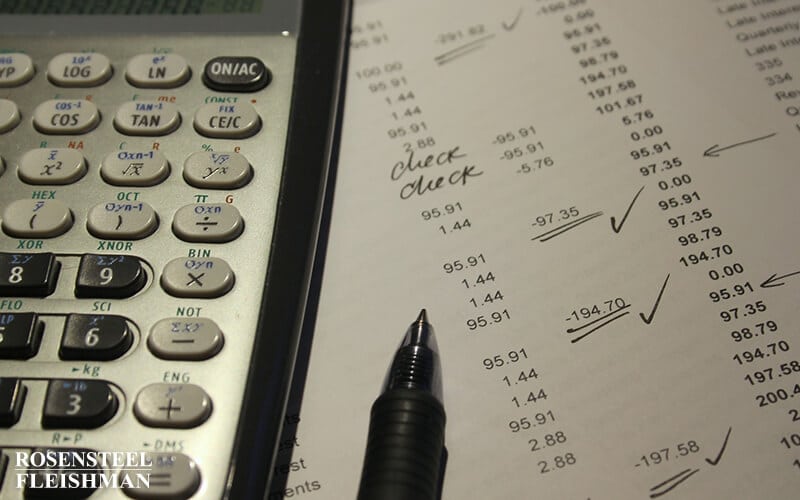Motorcycle accidents are devastating, especially when they result in the death of a loved one. It’s hard to fully grasp the emotional and practical impact in the immediate aftermath. Families are often left overwhelmed—coping with grief while also facing unexpected expenses, unanswered questions, and a deep sense of confusion about what steps to take next. […]

How Do You Calculate Pain and Suffering in Negligence Cases?
In personal injury claims, when a plaintiff is successful in proving the defendant acted with negligence, acted recklessly, or took part in intentional actions that caused injuries to a victim, damages may be recovered. Damages are classified as either general or special damages, commonly referred to as non-economic and economic damages. General damages further classified as non-economic damages in this article can include pain and suffering, physical impairment, mental anguish, loss of consortium, lower quality of life, and physical disfigurement. Non-economic damages differ from the economic damages sustained by a victim because economic damages are easily quantified. Economic damages include repair of damaged property, medical expenses, loss of irreplaceable items, and lost wages. Economic damages are determined by calculating the plaintiff’s quantifiable financial losses. Non-economic damages are far more complicated in proving and calculating.
Non-economic damages and economic damages fall under the larger umbrella of compensatory damages, which are different from punitive damages. Punitive damages are in place to punish a defendant for their actions that caused the injury to the plaintiff. Compensatory damages are indented to help a victim recover money spent, damages accrued, or recover a specific figure for non-economic damages.
Proving that non-economic damages took place can be one of the most daunting tasks faced by a plaintiff and their attorney. The first step that should be taken by anyone who has sustained injuries is to have clear photographs taken of any visible wounds, scars, or disfigurements. In personal injury claims where a plaintiff is trying to recover non-economic damages, the plaintiff can act as their own witness. One of the most effective ways that a plaintiff can show accurate documentation of their injuries is through daily journaling. When a plaintiff sustains an injury, they should take note of all the ways the injury has caused daily hardships. Daily hardships could include a myriad of occurrences; such as evidence of events or activities missed or even joy lost because those events that were missed.
Plaintiffs can also call on their medical records to help prove they endured some suffering. Doctors can give expert testimony about the injuries sustained as well as provide a prognosis for recovery and what future treatment will be needed by the plaintiff. Additionally, when a plaintiff speaks with a doctor regarding the injuries they sustained, the plaintiff should inform the doctor how their daily lives have been restricted because of the damages. When a plaintiff shares this information with the doctor, it will become part of the medical record of the plaintiff. For example, a plaintiff could inform a doctor they are not able to run in a marathon they have been training for because of the lingering effects of an injury.
A victim who is trying to recover damages can also use witness testimony to aid in their finical recovery of non-economic damages. Any person who knew the victim well before the accident and has stayed in contact with the victim follow the injuries will be able to testify. The witness will be able to shed light on the effect the damage had in the personal life of the victim, as well as corroborate testimony from the plaintiff regarding events missed or general loss of joy in the life of the plaintiff.
Proving that there are non-economic damages in a personal injury case is just one step for a plaintiff and their attorney. The next step for the injured party is to try and assign a number value to damages that do not have a number value. Calculating non-economic costs can be arduous to do precisely. The determination of the economic value is typically done by assigning an exact dollar amount to a subjective injury. Damages such as pain and suffering or mental anguish are unique to each plaintiff, thus making them difficult to quantify.
Over the past 50 odd years or so insurance carriers have used different methods of determining the exact value for non-economic damages. Some methods used by insurance carriers the multiplier method and the daily rate method.
The multiplier method was commonly used when calculating pain and suffering. To use the multiplier method, it is a prerequisite that the plaintiff has a detailed record of their economic damages. The math in the multiplier method is done by multiplying the total value of the plaintiff’s economic damages by a number somewhere between 1.5 and 3. The multiplier method only creates a rough estimate for plaintiffs and does not apply in all personal injury claims. The multiplier method was most effective when it is used in cases where damages do not exceed $50,000.
The second commonly used method in calculating damages is the daily rate method. The daily rate is also referred to as per diem. For a plaintiff to use this method, they must determine a fair daily rate for living with their injuries and then multiply this rate by the number of days it has taken them to recover. The complexity of using this method is justifying the daily rate set is reasonable. A plaintiff can best assure that their rate is fair by actually calculating their daily earnings. Applying the daily earnings of a plaintiff to the daily rate the plaintiff sets, creates the scenario where the plaintiff asserts that having to deal with pain caused by an injury is comparable to going to work every day.
While many insurance companies are still aware of the above methods they are used more as a guide than a rule. Insurance carriers today are much more data driven. They have access to thousands of claims over the USA that they can aggregate to determine the typical settlement value of a given case in a given jurisdiction. The job of the attorney is to make sure that the client is not seen as a number and additional information is provided to differentiate the claim.
It is important to note that North Carolina has set caps on non-economic damage that may be recovered. In theory, reducing the awards that may be recovered helps to keep insurance premiums at a lower rate. Non-economic damages in medical malpractice cases, for instance, are capped at $500,000. However, the same statute that creates the cap on non-economic damages also has several exceptions. If a plaintiff can demonstrate that they suffered disfigurement, loss of the use of a body part, death, or a medical provider was grossly negligent it would be possible for the plaintiff to exceed the cap.
Plaintiffs are most likely to see success in the recovery of non-economic damages if they keep a detailed account of the suffering they endured for the injury directly. The plaintiff will also rely heavily on witness testimony. Provided the plaintiff has documentation of suffering and credible witnesses they will likely be able to recover non-economic damages. If you or a loved one was injured by the negligence of another please call us. You will speak with a personal injury lawyer who can best answer your questions and provide options. There is no fee for an initial consultation.
Additional Injury Values Personal Injury Articles
Accidents can upend life in an instant. Whether it’s a crash on a busy Charlotte road or a slip and fall at a local business, the aftermath often leaves people overwhelmed with more questions than answers. It’s not just the physical pain or the property damage that’s hard to deal with—it’s the uncertainty that comes […]
Dog bite incidents can be frightening, especially when they happen unexpectedly. Whether you’re out for a walk, visiting someone’s home, or your child is playing in the neighborhood, a sudden bite can leave not only physical scars but also emotional ones. In those first few moments after it happens, it’s easy to feel overwhelmed and […]
It’s hard to describe the exact feeling after a car accident. One minute you’re driving along, and the next, your world is spinning—literally and emotionally. For many people, what comes after the crash is even more overwhelming. You're left dealing with pain, confusion, questions about fault, and pressure from insurance companies. It’s no surprise that […]
